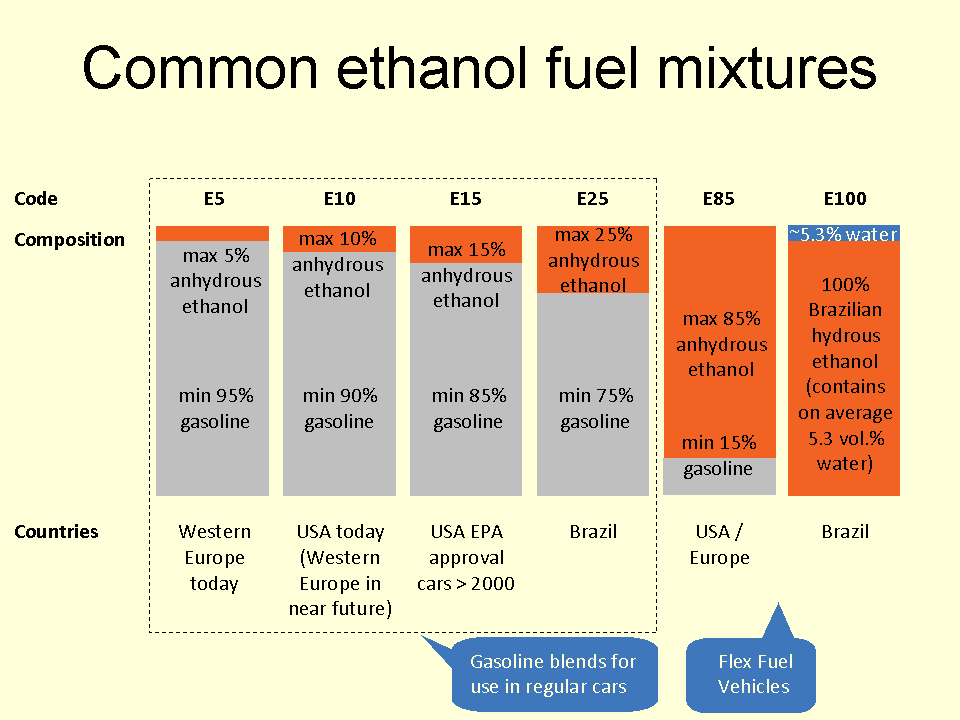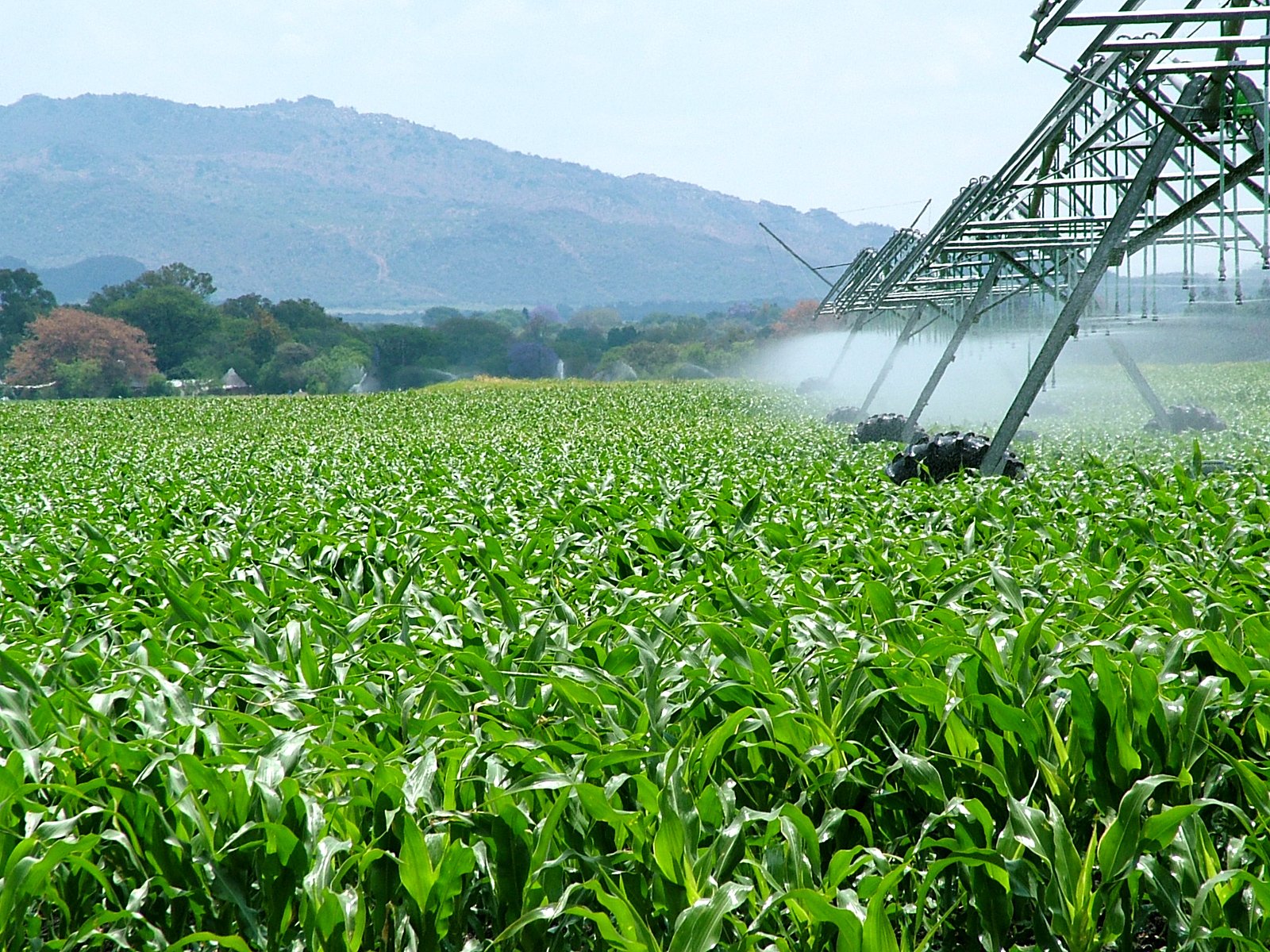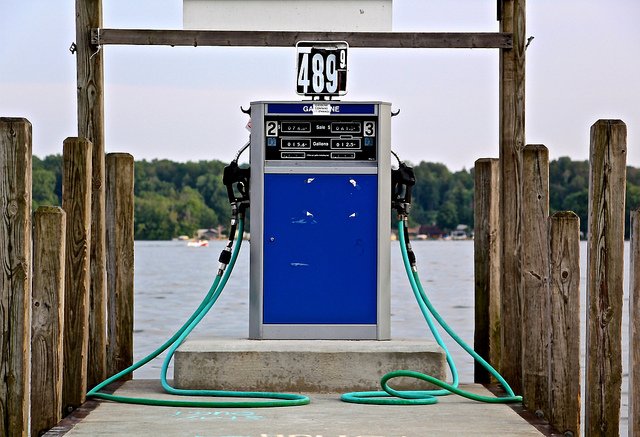How Ethanol Affects Boat Engines
Aaron
E10, E15, E85… what do these gas labels mean? What is ethanol fuel? Learn how ethanol affects boat engines.
What Is Ethanol?
Ethanol is a pure plant-based alcohol that is both volatile and flammable. Ethanol fuels are made from a wide variety of plants, including sugar beets, straw, wood chips and sugar cane. However, in the US, ethanol fuels are primarily made from corn. In fact, 44% of all corn grown in the US in 2012 and 14% of all corn grown in the entire world is converted to ethanol fuel in the US. That’s a lot of corn!
Fuel ethanol is not a new technology. In fact, ethanol was used in the US as a lamp fuel as far back as the mid 1800s, and the original Model T Ford was able to run on ethanol, kerosene or gasoline (maybe Henry Ford invented the first “flex fuel” vehicle too!).

Is Corn Ethanol More Environmentally Friendly Than Gasoline?
Probably not, but this is a topic of considerable debate.
Most people are relatively familiar with the various environmental impacts of gasoline, but don’t know much about the impacts of corn-based ethanol. Both gasoline and corn ethanol have considerable environmental impacts during production, although ethanol does offer reduced emissions relative to gas.
Due to the economic incentives that largely result from US tax-payer funded subsidies, midwest farmers are using ever-larger percentages of their land to grow fuel corn, rather than using the land for other purposes (grazing land, tree farms or food crops). Given the huge quantities of petroleum-based fertilizers and insecticides it takes to grow corn combined with the fossil fuels it takes to transport and process that corn into usable ethanol fuel, it’s hard to argue that ethanol is a “clean” or “eco-friendly” fuel. Ethanol critic Michael Pollan estimates that it takes roughly one gallon of fossil fuel to produce a single gallon of ethanol. It also takes about three gallons of water for an ethanol processing facility to produce one gallon of ethanol fuel, although some of this water is reused within the facility.
Beyond the fossil fuel and water it takes to produce ethanol, the primary criticism of corn-based ethanol production is that it takes a crop (and land) that could otherwise be used as food for people or livestock and turns it into an engine fuel instead. Many critics say that using corn to make fuel directly and indirectly drives up food prices. Basic economics says that the higher the demand for a product and the less of that product there is available, the higher its price will be.
So, the argument that corn-based ethanol is “better for the environment,” is dubious at best. It may well be true that ethanol derived from other types of plants (not corn) may be better for the environment.

Is Ethanol Good For My Boat Engine?
The simple answer is NO, especially for older outboards that weren’t designed to run on E10 fuel.
E10 is the common ethanol-gas blend found at most gas stations around the US. “E10” indicates the ethanol-to-gas-ratio (10 percent ethanol, 90% gas). Higher ethanol blends like E15 (15% ethanol, 85 gas) and even E85 for flex fuel cars (85% ethanol, 15% gas) are also available.
Generally speaking, running a car on a low ethanol-blend fuel, such as E10, isn’t a problem IF the car is used almost daily. However, for boats and their owners, ethanol fuels can pose a major problem.
Unlike with cars, most boaters aren’t out on the water in our boats every day. Our boats often sit unused for weeks or even months at a time. Also, boats have vented fuel systems that allow moisture to enter the gas tank. Since ethanol fuels are alcohol-based, they naturally absorb moisture (e.g. water) from outside the tank. As you probably know, combustion engines don’t run very well on water, so the water that is absorbed by the ethanol into the fuel tank can wreak havoc on a boat engine.
Once the water is in your boat’s fuel tank, a process called “phase separation” occurs. The gas will rise to the top and an ethanol/water blend will sink to the bottom. When this combusts inside your engine, it will cause sputtering and engine damage.
To make matters worse, ethanol is also a potent solvent. It will wear down all those rubber hoses and plastic parts that it passes through. Ethanol can cause the other plastic, rubber or fiberglass parts that it comes in contact with to become brittle enough to break.
- Find and Use Non-Ethanol Gas – Boat manufacturers suggest using non-ethanol gasoline when/if it’s available for optimal engine operation. Thankfully, many boat marinas carry ethanol-free gasoline and some regular gas stations also stock a supply. Call a few gas stations or your local marina to find out if they carry ethanol gas, and plan your boating excursions accordingly. 90% of all recreational boat owners in the US trailer their boats, so once you find a location to get non-ethanol gas, you should be able to get your boat to the pump and into the water relatively easily (assuming a nearby marina doesn’t carry non-ethanol gas).
- Never Use Anything Beyond E10 Blends – If you have to use an ethanol blend fuel, be sure NOT to use a blend LOWER than E10 (10% ethanol). If you have a newer boat, there will likely be a warning sticker next to your gas tank with a similar warning. There’s a big difference between E10 and E15 and you could end up destroying your boat’s engine and voiding your warranty if you use E15.
- Use a Filter – If you decide to (or have to) use E10 gas, make sure you have a high-quality (at least 25-micron) marine fuel-water separator filter installed in your boat’s gas line. this filter keeps water and debris out of your engine. Check the filter and replace it regularly, and if you see a lot of plastic or fiberglass “gunk” building up in your filter, take your boat to a mechanic immediately since this likely means you have engine parts that are being worn away by the ethanol.
- Fill It or Empty It – If you have to use ethanol, make sure to either completely fill your gas tank or completely empty it if you’re not going to be using your boat for an extended period of time (3 weeks of more). A half-full tank of E10 is likely to end up absorbing a lot of water from the outside to the inside of your gas tank. If the gas tank is full, there isn’t anywhere for the water to go. If it’s empty, there is no ethanol to attract the water in the first place.

Another Way To Protect Your Boat...
Hey, there’s more than one way to protect your boat and its passengers! When you’re not on the water, you should use a high quality boat cover to protect your boat against the elements. And when you’re out on the water, use a bimini top to provide your passengers with some much-needed shade, reducing the risk of sunburn and dehydration.
Mention this blog post when you contact us and get an additional 10% off your order!
